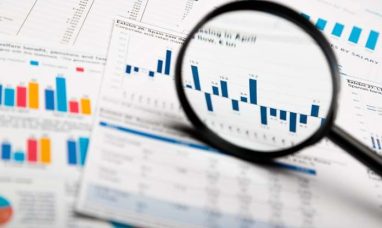For the second quarter of 2022, bank earnings appear to be decreasing. The rising interest rates are beneficial to the large banks. They are profiting from market volatility. However, their transactions are declining and their investment banking business appears to be stagnant.
In addition, loan losses are being increased to account for future loan losses that will be incurred during the forthcoming economic downturn. Jamie Dimon, CEO of JPMorgan Chase (NYSE:JPM), is delaying stock buybacks shortly to preserve bank capital ratios. Morgan Stanley’s (NYSE:MS) second-quarter earnings report mirrored that of JPMorgan, with the exception that stock buybacks were not mentioned.
Worthy of note is the fact that JPMorgan Chase (NYSE:JPM) has set a return on tangible common equity target for the year of 17.0 percent. The company confirmed this objective and announced that it will reach this level in the second quarter of 2022.
During the second quarter, Morgan Stanley (NYSE:MS) reported a return on tangible common equity of 13.8%. Even though the public coverage of these results casts doubt on bank performance, these outcomes are not terrible. The Financial Times published the following headline: “JPMorgan suspends share repurchases as earnings miss estimates.” For Morgan Stanley (NYSE:MS), the Investment banking slowdown hurts Morgan Stanley’s profits.
Prices of Stock
At the time of writing, the S&P 500 stock index had dropped by more than 70 points, the Dow Jones Industrial Average by more than 600 points, and the NASDAQ by more than 220 points as a result of the huge banks’ poor results. The initial market reaction has been ascribed to the fact that the two major banks missed their quarterly profit projections, the weakening economy, and the mounting concern over additional loan losses. Particularly JPMorgan Chase (NYSE:JPM) appeared concerned about the sluggish economy.
Jamie Dimon, chief executive officer of JPMorgan (NYSE:JPM), stated that he foresaw “an economic hurricane on the horizon,” although he did not know “how severe it would be.” In any case, investors appear to be pessimistic this morning about the significant banking results that have been reported thus far. Because the year-over-year inflation rate for June was 9.1 percent, the highest level in forty years, many analysts are predicting that the Federal Reserve will likely hike its policy interest rate by 1 percent at its July meeting. Earlier this month, the Canadian Central Bank increased its policy interest rate by one percent. In the current atmosphere, it would not be surprising if the Fed took this action.
Dollar Equalizes the Euro
And, ultimately, the price of one euro fell below one dollar on Thursday morning. If you have been reading my blog entries over the past several weeks, you will realize that this does not come as a surprise to me. Recently, two factors have been driving this price. In the past few years, the Federal Reserve has increased the value of the U.S. dollar relative to other currencies. Consequently, the euro’s value has been declining throughout this period.
Second, Europe’s economy is currently in shambles, and this discord is causing more and more people to move their money out of the continent. The Russian invasion of Ukraine has only made the situation worse. Many economists predict that the dollar value of the euro should decrease further. Some think that the price of one euro could fall to $0.9500. This would truly lay the groundwork for a new era in the world. With all the changes that are currently occurring in the world, this is not surprising.
Future Years The world is in flux.
Until recently, the focus has been on the technical changes occurring and how these changes will lead to a reorganization of the globe. Now we can see that there is a great deal more going on in the world’s economies. Since the 1960s, the globe has been experiencing a period of credit inflation, which I’ve been writing about for roughly the past decade. This atmosphere of credit inflation has changed the globe as financial engineering has come to dominate the business world, resulting in a focus on the investment of assets with funds redirected from real capital assets that would contribute to the increase in labor productivity.
Stock prices have often reached fresh historical highs. The housing market has become unaffordable. Likewise, the prices of numerous commodities have increased. But throughout the last phase of the economic boom, from 2009 to 2019, the longest period of economic prosperity in U.S. history, labor productivity growth has been negligible. In other words, all the economic saving has had little effect on economic growth. About three years ago, the situation deteriorated much further.
To secure the financial system and the economy, the Federal Reserve injected more liquidity into the United States than ever before in such a short period. Misallocations and dislocations proliferated. Disequilibrium has taken control of the economy. The current state of the world demonstrates the implications of this historical behavior. We are living in a time of extreme unpredictability when we have very little information on which to base our future predictions.
Featured Image: Megapixl @wutzko















